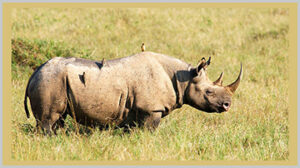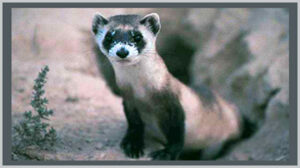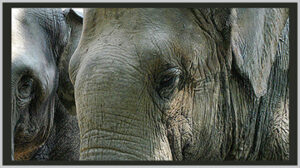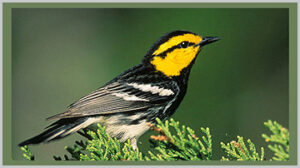Endangered Species
An endangered species is defined as a species (plant or animal) that is in danger
of extinction throughout all or a significant portion of its range.
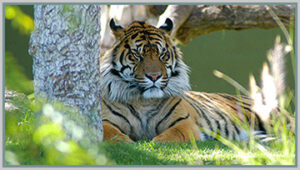
ENDANGERED TIGERS: Of the original nine subspecies of tigers only six subspecies remain as three have become extinct. Of the remaining six subspecies, three are listed as Endangered and three are listed as Critically Endangered. Click to view case studies of all six remaining tigers (continue)
AYE-AYE: It took scientists decades to agree that the aye-aye was actually a lemur. It is truly the most bizarre of all lemurs, and one of the most endangered. The black, scruffy-looking aye-aye has a head too large for its body, striking orange eyes, over sized teeth, huge bat-like ears, (continue)
BLACK LEMUR: The black lemur is one of 28 species of lemurs, which are primitive relatives to monkeys and apes. The black lemur is unique among lemurs in that males and females are different colors. Its name comes from the coloration of the male, which is uniformly (continue)
BLACK RHINO: The name “rhino” conjures up the image of a prehistoric beast, a huge creature with skin of armor. This image is not surprising, since these intelligent and affectionate creatures have inhabited the Earth for 60 million years. An extinct species of rhino that lived in Mongolia (continue)
BLACK-FOOTED FERRET: The rarest mammal in the United States, the black-footed ferret is a short-legged, slender-bodied weasel. It measures just 1 1/2 feet (46 cm) nose to tail. This small carnivore once was widely distributed throughout the North American Great Plains from (continue)
CORAL REEF: The International Union for the Conservation of Nature (IUCN) has named coral reefs as one of the life-support systems essential for our own survival. Found around coastlines in the tropics, coral reefs provide homes for about a third of all fish species on Earth (continue)
ELEPHANT: Throughout history, the elephant has played an important role in human economies, religion, and culture. The immense size, strength, and stature of this largest living land animal has intrigued people of many cultures for hundreds of years. In Asia, elephants have served (continue)
GIANT OTTER: The giant otter is the South American cousin to the sea and river otters of North America, as well as those of Europe and Africa. The giant otter can grow to more than 6 feet (2 meters) long and 70 pounds (32 kg), nearly twice as large as its American (continue)
GOLDEN LION TAMARIN Tiny, agile, and highly social, the golden lion tamarin has captivated people the world over. The tamarin has become a flagship species, highlighting the demise of its Tropical rain forest home. The golden lion tamarin’s long, silky fur, particularly at the (continue)
GOLDEN-CHEEKED WARBLER: The golden-cheeked warbler is one of over 200 species of migratory birds whose survival is threatened by destruction of tropical rain forests. Neotropical migratory birds, including other kinds of warblers, orioles, tanagers, hummingbirds, (continue)

HAIRY-EARED DWARF LEMUR: The hairy-eared dwarf lemur of Madagascar is one of the smallest primates known. It was first described by scientists in 1875 and was not seen after that except by local Madagascan people who live in and near the rainforest. It was presumed to be (continue)
KAKAPO: The kakapo is also called the “owl parrot” for its nocturnal habits and owllike body and large eyes. There once were hundreds of thousands of kakapos on the islands of New Zealand in the south Pacific. Today only about 142 kakapos survive in the wild on (continue)
KOMODO DRAGON: The Komodo dragon, or Komodo monitor lizard, is thought to be the source of Chinese legends of great scaly man-eating monsters, the dragons that are still featured prominently in Chinese folklore and religion. the dragons that are still the dragons (continue)
MEDITERRANEAN MONK SEAL: Nearly 140 million people live along the Mediterranean Sea’s 28,000 miles (45,000 km) of coastline. An equal number of tourists flood the area from May to October every year to enjoy the white sand beaches and warm waters. This crush (continue)
MOUNTAIN GORILLA: Gorillas are one of the most feared animals in the world, thanks to movies like King Kong and Congo . While it is true that they are large, powerful creatures, they are also gentle and affectionate. Mountain gorillas are easygoing vegetarians who lead (continue)
NUMBAT: The numbat, also called the marsupial anteater, is a small, slow-moving oddity of Australia. Its reddish-brown body banded with white and black eye stripes on a delicate tapering head, give it a striking appearance. The gentle and squirrel-like numbat grows to be up to (continue)
ORANGUTAN: The only great ape that lives on the Asian continent, the orangutan is found on the Malaysian islands of Borneo and Sumatra. Its name means “man of the forest,” and it is one of thousands of species of wildlife that live in tropical Asian forests. The orangutan’s story (continue)
PHILIPPINE MONKEY-EATING EAGLE: Eagles have held a special place in the cultures of many civilizations because of their impressive size and beauty. Used to symbolize royal power, from ancient Egypt to the Roman and Napoleonic empires, eagles have appeared on coins, (continue)


